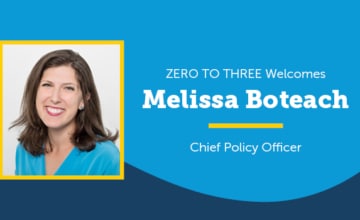In the realm of advocacy, it takes more than one person to move an agenda.
We all know people that we would consider leaders, both in our personal life and our professional life. However, when you think about it, not all leaders are the same.
All advocates are leaders through the particular skills that they bring to their policy work.
The Institute for Sustainable Communities Advocacy and Leadership Center recognized this and developed definitions of the various types of leaders commonly associated with advocacy efforts. By thinking broadly about leadership, we are able to better appreciate and understand the strengths of the people we are working with, allowing us to capitalize on the contributions of each individual advocate.
Advocacy Leadership Styles
- Visionaries are leaders who lift the horizons of others, set goals that have never been imagined or seen as realistic, challenge conventional views of the possible, aim high, take risks, and rethink established priorities.
- Strategists sort out the piece of a vision that is realistically attainable and develop a specific plan for getting there, anticipate obstacles, provide guidance to ensure that the movement remains headed in the right direction, choose tactics strategically, plan for contingencies, and seize new opportunities.
- Statespersons carry the movement flag, act as larger-than-life public figures embodying authority and trust, and radiate credibility for a movement beyond its supporters.
- Experts ensure that all new discoveries and public policy positions are well-reasoned and grounded in fact, and have special skills and knowledge that lend credibility or support to positions.
- Outside sparkplugs agitate and unabashedly tell the truth to power, operate outside of conventional establishments and are free of the ties binding inside players, hold government and established organizations up to their rhetoric of mission and commitment, kick-start a movement and keep the energy flowing, can sometimes be annoying or difficult but churn up the collective conscience.
- Inside advocates act as skilled negotiators wise in the ways of political process and positioned to influence key policymakers, occupy power or open doors to it, and intuit approaches and arguments that resonate with policymakers and press them in ways that cannot be easily dismissed.
- Strategic communicators serve as public teachers, are masters of the sound bite, and translate complex scientific data, public policy, and ideas of truth and justice into accurate and powerful metaphorical messages for the broader public.
- Cultural activists use cultural preservation, history, and activism to sustain movements, serve as public opinion leaders whom members of a cultural community follow, and build bridges between a movement’s actions and powerful cultural meanings.
- Movement builders reach out to draw in new allies, make both old and new movement members feel welcome and valued, bridge generations, link local with national and international advocacy, create space for knowledge gained through experience to be passed on, initiate new approaches to participation so diverse voices are heard and their demands are heeded, circumvent organizational turf hurdles, convene and facilitate, and seek to explore differences through civil discourse and debate.
- Generalists bring multi-layered skills to the effort cultivated through years of experience, see a movement’s activities from many sides and can turn their attention to many tasks, and model the ideals of a movement by integrating them into their day-to-day perspective.
- Historians ensure that activists benefit from the lessons of those who came before them, recount the history of relationships with partners and key players and the history and evolution of the issue itself over time, provide activists with a sense of their legacy: honor of and obligation to the past, renewing the call to act in the present and to leave new lessons for the future.
As advocates for infants and toddlers, we often collaborate with others to achieve our policy goals. Leaders, therefore, are not necessarily the most vocal or visible members of these groups, or even the ones who have been designated as “in charge.” Instead, each advocate is a leader with their own strengths to offer in advancing an infant-toddler policy agenda.
What Kind of Leader Are You?
As you think about these different leadership styles, consider the following questions.
- Do you see yourself in one of the leadership styles described above? Does your leadership style overlap more than one of the styles described above?
- Have you encountered these various leadership styles in individuals with whom you have worked? If so, which leaders and leadership styles did you work best with? Which ones were more challenging for you to collaborate with and why?
- When thinking of your advocacy work and the groups in which you are involved, are any of them lacking in one of the leadership styles described above? If so, do you know anyone who might be able to fill that void?



